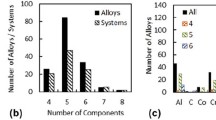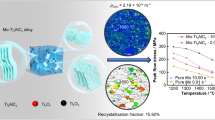Abstract
This article reports the results of the microstructural examination of the irradiated U–19Pu–10Zr fuel. New insights gained using selective area electron diffraction analysis in a transmission electron microscope provide crystallographic information on the phases previously identified based primarily on the chemical compositions. After irradiation, the microstructure of the fuel separates into γ-(U, Pu, Zr) in the central region with a secondary nanocrystalline UO2 phase, γ-(U, Pu, Zr) with a secondary ZrO2 phase in the intermediate, and ζ-(U, Pu) in the outer regions. While the surface microstructural features and porosity indicate separation into three concentric zones consistent with the existing constituent redistribution model, crystallographically the fuel consists of two zones: inner (with γ-(U, Pu, Zr) as a matrix phase) and outer (with ζ-(U, Pu) as a matrix phase). Our results highlight the importance of crystal structure in phase identification and can be used to supplement the existing constituent redistribution model.
Impact statement
Metal fuels are an excellent fuel choice for generation four (Gen IV) fast reactors because of their high heavy metal density and excellent thermal conductivity. Understanding phases and phase relationships in U–Pu–Zr fuels is critical for understanding fuel behavior because constituent redistribution, fission gas release, swelling, and melting or formation of liquid phases all fundamentally depend on the phases present in the fuel. Multiple phases exist in U–Pu–Zr fuels before and after irradiation and the phases evolve throughout the life of the fuel pin. This study provides novel insights into phases present in irradiated U–Pu–Zr fuels and expands our current understanding of the constituent redistribution. These findings are critical for advancing the basic understanding of metal fuel behaviors because they have the unique and powerful potential to improve uranium utilization and economics, facilitate breed and burn fuel management, and increase safety, which is essential for the future of nuclear energy. Considering the global push for clean energy, one must not discard nuclear energy, which has zero emissions, small land footprint, and minimal waste as compared to other energy sources. Of the existing concepts, metal fuels are considered to be more technologically mature and thus should be prioritized.
Graphical abstract






Similar content being viewed by others
Data availability
The data will be made available upon reasonable request.
References
N.E. Stauff, F. Heidet, “Assessment of Low Enriched Uranium Fueled Core Configurations for the Versatile Test Reactor,” presented at the American Nuclear Society Annual Meeting (Minneapolis, June 9–13, 2019), OSTI.GOV; 1528969
TerraPower, NatriumTM Reactor and Integrated Energy Storage (2022)
J. Hirschhorn, M. Tonks, C. Matthews, J. Nucl. Mater. 544, 152657 (2021). https://doi.org/10.1016/j.jnucmat.2020.152657
T. Ogata, “Metal Fuel,” in Comprehensive Nuclear Materials, Volume 3: Advanced Fuels/Fuel Cladding/Nuclear Fuel Performance Modeling and Simulation, ed. by R.J.M. Konings (Elsevier, Amsterdam, 2012), pp. 1–40. https://doi.org/10.1016/B978-0-08-056033-5.00049-5
T. Ogata, Y.S. Kim, A.M. Yacout, “Metal Fuel Performance Modeling and Simulation,” in Comprehensive Nuclear Materials, Volume 3, Advanced Fuel Cladding/Nuclear Fuel Performance Modeling and Simulation, ed. by R.J.M. Konings, R.E. Stoller (Elsevier, Amsterdam, 2012), pp. 713–753
W.F. Murphy, W.N. Beck, F.L. Brown, B.J. Koprowski, L.A. Neimark, Postirradiation Examination of U–Pu–Zr Fuel Elements Irradiated in EBR-II to 4.5 Atomic Percent Burnup (Technical Report No. ANL-7602, Office of Scientific and Technical Information [OSTI], Argonne National Laboratory, Argonne, 1969). https://doi.org/10.2172/4169781
Y.H. Sohn, M.A. Dayananda, G.L. Hofman, R.V. Strain, S.L. Hayes, J. Nucl. Mater. 279, 317 (2000). https://doi.org/10.1016/S0022-3115(99)00290-1
D.L. Porter, C.E. Lahm, R.G. Pahl, Metall. Trans. A 21, 1871 (1990). https://doi.org/10.1007/BF02647234
D.E. Janney, Metallic Fuels Handbook, Part 1 and Part 2 (Technical Report No. INL/EXT-15-36520-Rev003, Idaho National Lab, Idaho Falls, 2018)
T. Ogata, Y.S. Kim, A. Yacout, “Metal Fuel Performance Modeling and Simulation,” in Comprehensive Nuclear Materials, Volume 5, Advanced Fuel Concepts, Research Reactor Fuels, and Space Applications, 2nd edn., ed. by R.J.M. Konings, R.E. Stoller (Elsevier, Amsterdam, 2020), pp. 43–87
D.R. O’Boyle, A.E. Dwight, “The Uranium-Plutonium-Zirconium Ternary Alloy System,” in Plutonium 1970 and Other Actinides, Nuclear Metallurgy Volume 17, Part II, Proceedings of the 4th International Conference on Plutonium and Other Actinides, ed. by W.M. Miner (Metallurgical Society of AIME, Warrendale, 1970), p. 720
S.S. Hecker, Los Alamos. Sci. 26, 128 (2000)
D.E. Janney, S.L. Hayes, C.A. Adkins, Nucl. Technol. 205, 1387 (2019). https://doi.org/10.1080/00295450.2019.1578573
K.E. Wright, J.M. Harp, L. Capriotti, J. Nucl. Mater. 526, 151745 (2019). https://doi.org/10.1016/j.jnucmat.2019.151745
M. Ishida, T. Ogata, M. Kinoshita, Nucl. Technol. 104, 37 (1993). https://doi.org/10.13182/NT93-A34868
Y.S. Kim, G.L. Hofman, S.L. Hayes, Y.H. Sohn, J. Nucl. Mater. 327, 27 (2004). https://doi.org/10.1016/j.jnucmat.2004.01.012
Y.S. Kim, S.L. Hayes, G.L. Hofman, A.M. Yacout, J. Nucl. Mater. 359, 17 (2006). https://doi.org/10.1016/j.jnucmat.2006.07.013
J. Galloway, C. Unal, N. Carlson, D. Porter, S. Hayes, Nucl. Eng. Des. 286, 1 (2015). https://doi.org/10.1016/j.nucengdes.2015.01.014
F.H. Ellinger, Trans. Am. Inst. Min. Metall. Pet. Eng. 206, 1256 (1956)
P. Chiotti, H.H. Klepfer, R.W. White, Trans. Am. Soc. Met. 51, 772 (1959)
A. Heiming, W. Petry, J. Trampenau, W. Miekeley, J. Cockcroft, J. Phys. 4, 727 (1992). https://doi.org/10.1088/0953-8984/4/3/012
A. Aitkaliyeva, J.W. Madden, B.D. Miller, C.A. Papesch, J.I. Cole, J. Nucl. Mater. 467, 717 (2015). https://doi.org/10.1016/j.jnucmat.2015.10.043
J. McFarlane, “Fission Product Tellurium Chemistry from Fuel to Containment,” in Proceedings of the 4th CSNI Workshop on the Chemistry of Iodine in Reactor Safety, ed. by S. Güntay (Würenlingen, June 10–12, 1996 ), p. 563
J. McFarlane, J.C. LeBlanc, Fission-Product Tellurium and Cesium Telluride Chemistry Revisited (Technical Report AECL-11333, COG-95-276-1, Atomic Energy of Canada Ltd., Whiteshell Laboratories, Manitoba, 1996)
A. Aitkaliyeva, J.W. Madden, C.A. Papesch, J.I. Cole, J. Nucl. Mater. 473, 75 (2016). https://doi.org/10.1016/j.jnucmat.2016.02.022
T. Yao, L. Capriotti, J.M. Harp, X. Liu, Y. Wang, F. Teng, D.J. Murray, A.J. Winston, J. Gan, M.T. Benson, L. He, J. Nucl. Mater. 542, 152536 (2020). https://doi.org/10.1016/j.jnucmat.2020.152536
A. Aitkaliyeva, C.A. Adkins, J. Hirschhorn, C. McKinney, M.R. Tonks, F.G. Di Lemma, J. Nucl. Mater. 523, 80 (2019). https://doi.org/10.1016/j.jnucmat.2019.05.051
T. Yao, A. Sen, A. Wagner, F. Teng, M. Bachhav, A. EI-Azab, D. Murray, J. Gan, D.H. Hurley, J.P. Wharry, M.T. Benson, L. He, Materialia (Oxford) 16, 101092 (2021). https://doi.org/10.1016/j.mtla.2021.101092
T. Yao, A.R. Wagner, X. Liu, A. EI-Azab, J.M. Harp, J. Gan, D.H. Hurley, M.T. Benson, L. He, Materialia (Oxford) 9, 100592 (2020). https://doi.org/10.1016/j.mtla.2020.100592
L. Leibowitz, R.A. Blomquist, A.D. Pelton, J. Nucl. Mater. 184, 59 (1991). https://doi.org/10.1016/0022-3115(91)90533-D
M. Kurata, CALPHAD 23, 305 (1999). https://doi.org/10.1016/S0364-5916(00)00004-3
M. Kurata, IOP Conf. Ser. Mater. Sci. Eng. 9, 012022 (2010). https://doi.org/10.1088/1757-899X/9/1/012022
F.H. Ellinger, R.O. Elliott, E.M. Cramer, J. Nucl. Mater. 1, 233 (1959). https://doi.org/10.1016/0022-3115(59)90019-4
J.A.C. Marples, J. Phys. Chem. Solids 25, 521 (1964). https://doi.org/10.1016/0022-3697(64)90140-4
V.I. Khitrova, V.V. Klechkovskaya, Sov. Phys. Crystallogr. 30, 70 (1985)
L. Desgranges, G. Baldinozzi, G. Rousseau, J.-C. Ni, G. Calvarin, Inorg. Chem. 48, 7585 (2009). https://doi.org/10.1021/ic9000889
F. Canepa, G.A. Costa, E.A. Franceschi, Lanthan. Actin. Res. 1, 41 (1985)
J. Li, H.Y. Guo, D.M. Proserpio, A. Sironi, J. Solid State Chem. 117, 247 (1995). https://doi.org/10.1006/JSSC.1995.1270
W. Qin, T. Nagase, Y. Umakoshi, Acta Mater. 57, 1300 (2009). https://doi.org/10.1016/J.ACTAMAT.2008.11.009
G. Xie, L. Shao, D.V. Louzguine-Luzgin, A. Inoue, Surf. Coat. Technol. 206, 829 (2011). https://doi.org/10.1016/J.SURFCOAT.2011.04.002
O. El-Atwani, E. Esquivel, M. Efe, E. Aydogan, Y.Q. Wang, E. Martinez, S.A. Maloy, Acta Mater. 149, 206 (2018). https://doi.org/10.1016/J.ACTAMAT.2018.02.035
M. Myers, E.G. Fu, M. Myers, H. Wang, G. Xie, X. Wang, W.K. Chu, L. Shao, Scr. Mater. 63, 1045 (2010). https://doi.org/10.1016/J.SCRIPTAMAT.2010.07.027
Z. Shang, J. Ding, C. Fan, D. Chen, J. Li, Y. Zhang, Y. Wang, H. Wang, X. Zhang, Acta Mater. 196, 175 (2020). https://doi.org/10.1016/J.ACTAMAT.2020.06.019
X. Tan, L. Luo, H. Chen, X. Zhu, X. Zan, G. Luo, J. Chen, P. Li, J. Cheng, D. Liu, Y. Wu, Sci. Rep. 5, 12755 (2015). https://doi.org/10.1038/srep12755
V.V. Trinadh, P. Manikandan, S. Bera, S. Ghosh, C.V.S. Brahmananda Rao, T.S. Lakshmi Narasimhan, M. Joseph, J. Nucl. Mater. 539, 152251 (2020). https://doi.org/10.1016/J.JNUCMAT.2020.152251
D.E. Janney, J.R. Kennedy, Mater. Charact. 61, 1194 (2010). https://doi.org/10.1016/J.MATCHAR.2010.07.012
G.L. Hofman, R.G. Pahl, C.E. Lahm, D.L. Porter, Metall. Trans. A 21, 517 (1990). https://doi.org/10.1007/BF02671924
D.E. Janney, Metallic Fuels Handbook, Part 1 and Part 2 (Technical Report No. INL/EXT-15-36520-Rev003, Idaho National Lab, Idaho Falls, 2018)
T. Yao, X. Liu, Y. Wang, F. Teng, D.J. Murray, M. Meyer, M.T. Benson, L. Capriotti, J. Nucl. Mater. 568, 153846 (2022). https://doi.org/10.1016/J.JNUCMAT.2022.153846
J.M. Harp, H.J.M. Chichester, L. Capriotti, J. Nucl. Mater. 509, 377 (2018). https://doi.org/10.1016/J.JNUCMAT.2018.07.003
J.M. Harp, L. Capriotti, H.J.M. Chichester, P.G. Medvedev, D.L. Porter, S.L. Hayes, J. Nucl. Mater. 509, 454 (2018). https://doi.org/10.1016/J.JNUCMAT.2018.07.019
Acknowledgments
This work was supported by the US Department of Energy, Office of Nuclear Energy under DOE Idaho Operations Office Contract No. DE-AC07-051D14517 as part of a Nuclear Science User Facilities experiment. A.A.’s time was covered by the Idaho National Laboratory joint appointment supported by the Fuel Cycle Research and Development Program (FCRD). Special thank you to M. Mika and A. Rabin for their help with editing the manuscript.
Author information
Authors and Affiliations
Corresponding author
Ethics declarations
Conflict of interest
The authors have no competing interests to declare that are relevant to the content of this article.
Rights and permissions
Springer Nature or its licensor holds exclusive rights to this article under a publishing agreement with the author(s) or other rightsholder(s); author self-archiving of the accepted manuscript version of this article is solely governed by the terms of such publishing agreement and applicable law.
About this article
Cite this article
Rahn, T., Miller, B.D., Capriotti, L. et al. TEM-based phase characterization of U–19Pu–10Zr irradiated in ATR. MRS Bulletin 48, 351–360 (2023). https://doi.org/10.1557/s43577-022-00422-2
Accepted:
Published:
Issue Date:
DOI: https://doi.org/10.1557/s43577-022-00422-2




